books
windows (AKAAKA Art Publishing , 2023)
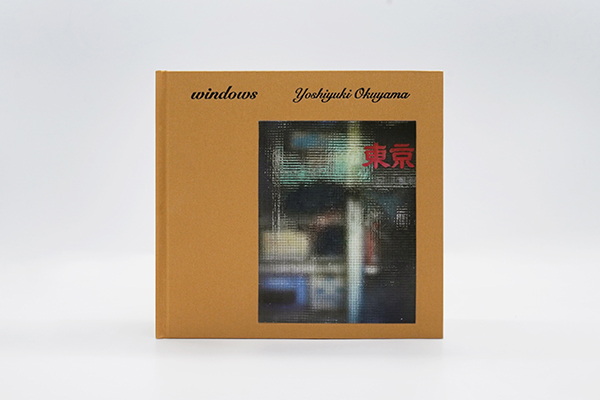
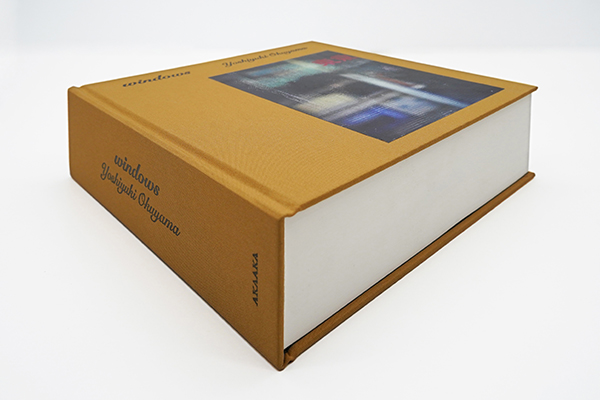
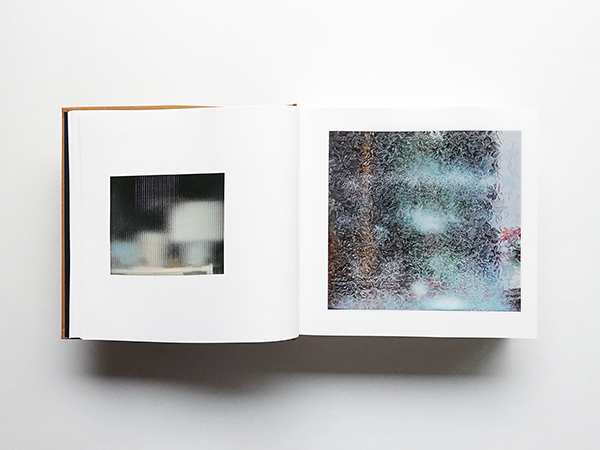
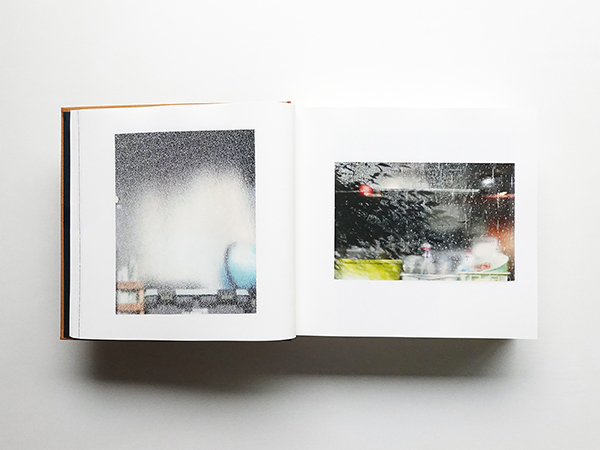
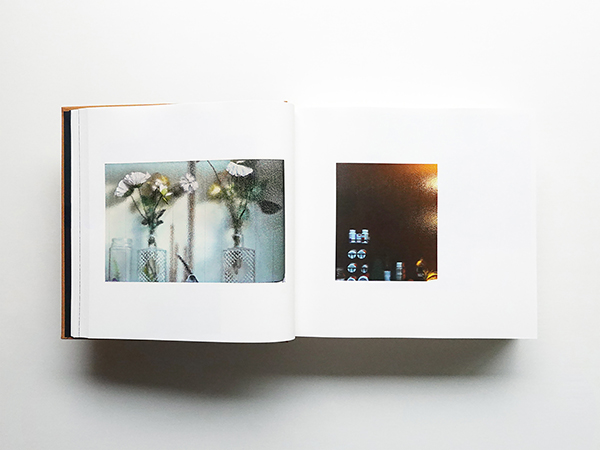
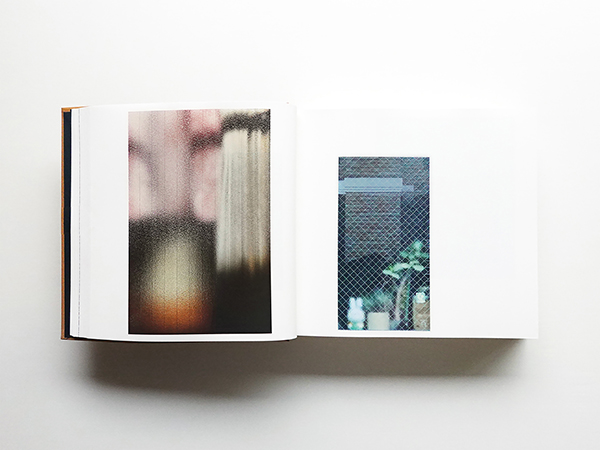
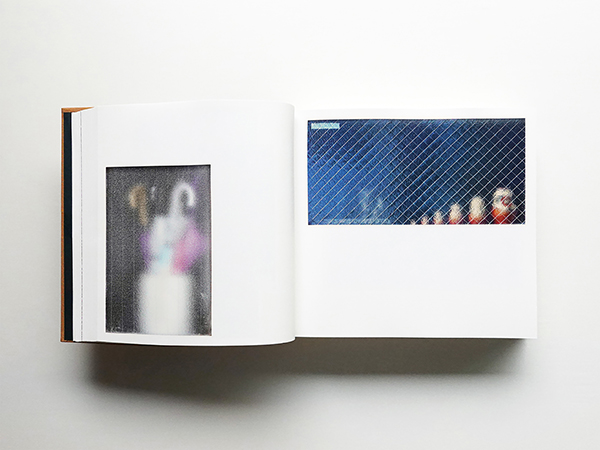
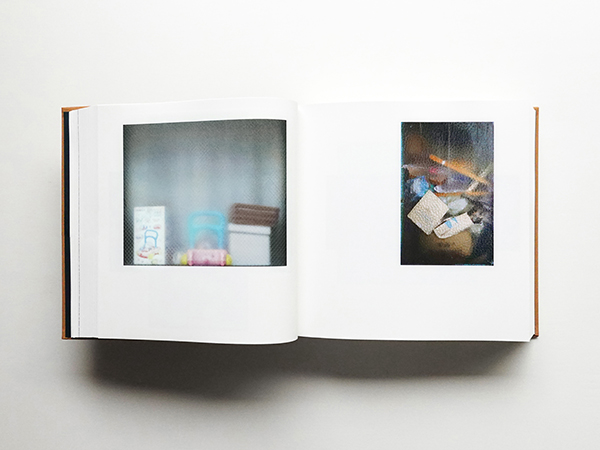
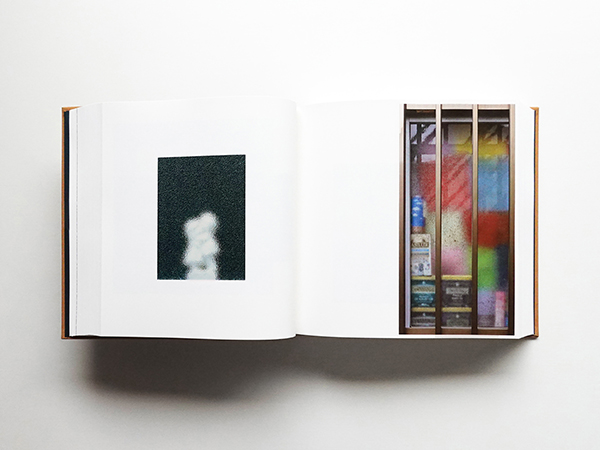
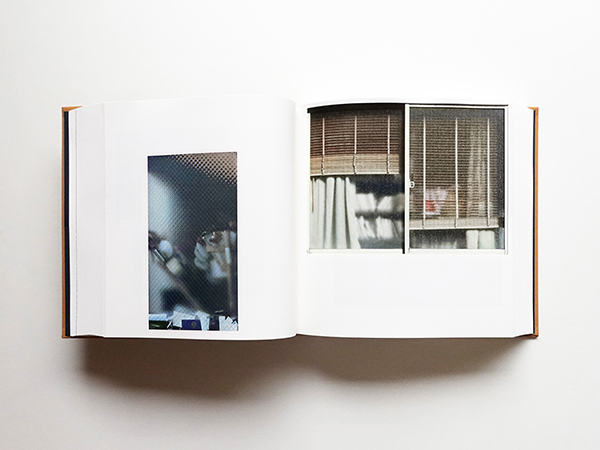
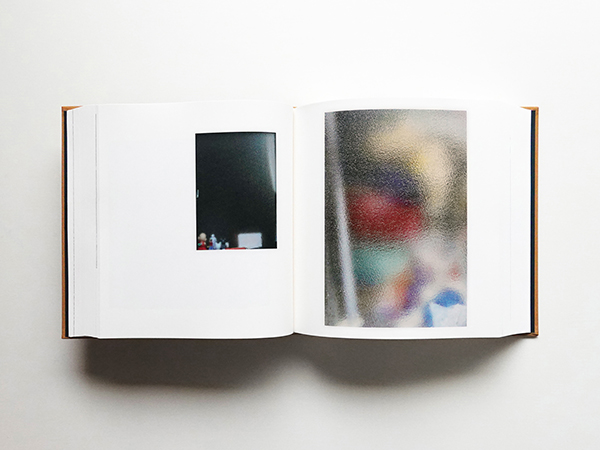
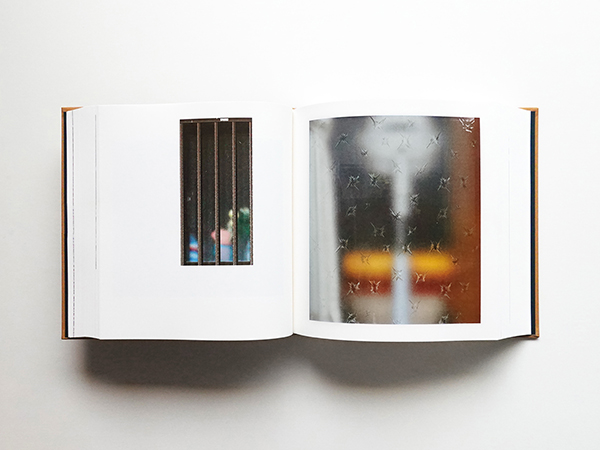
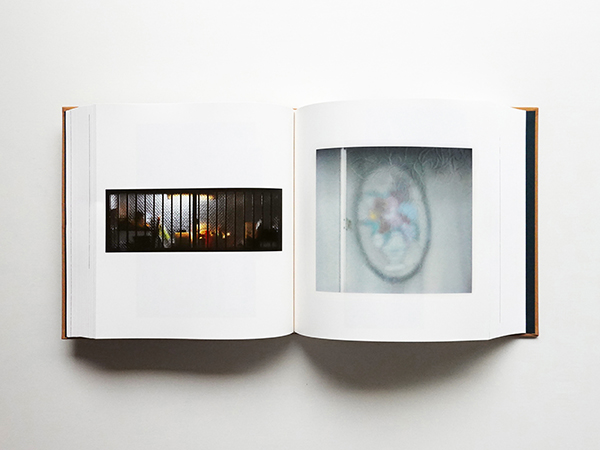
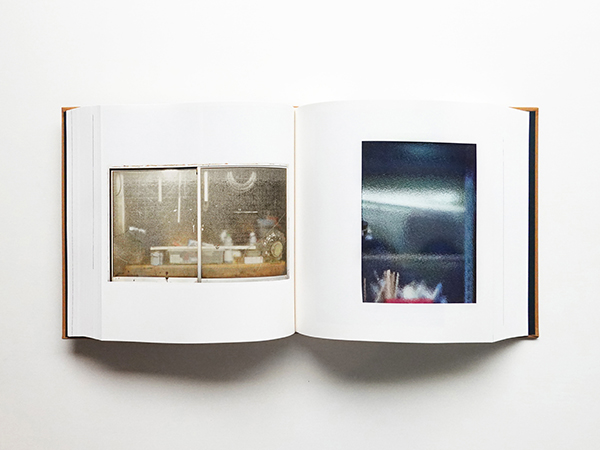
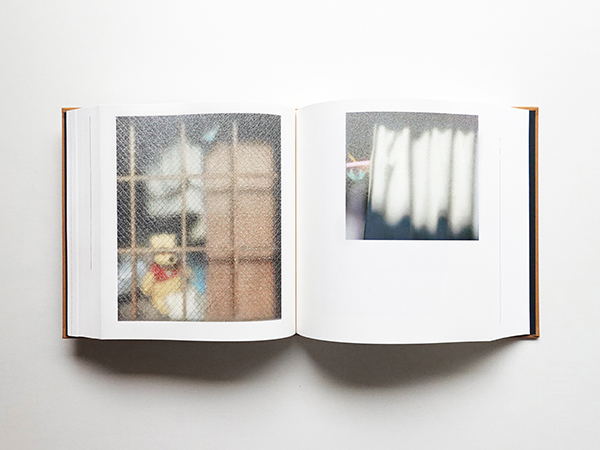
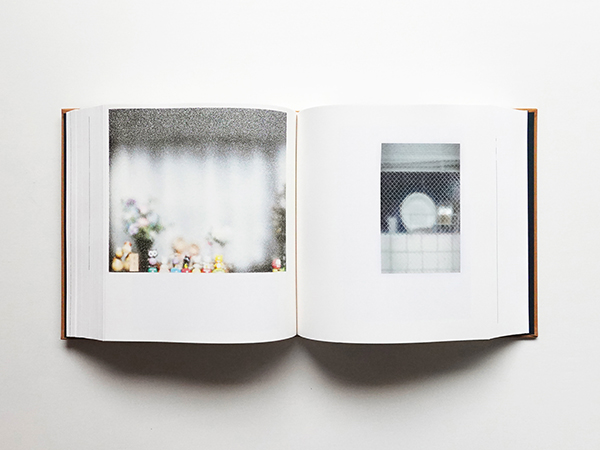
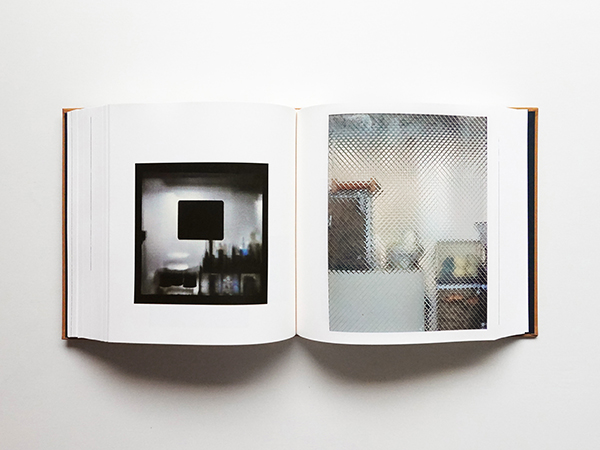
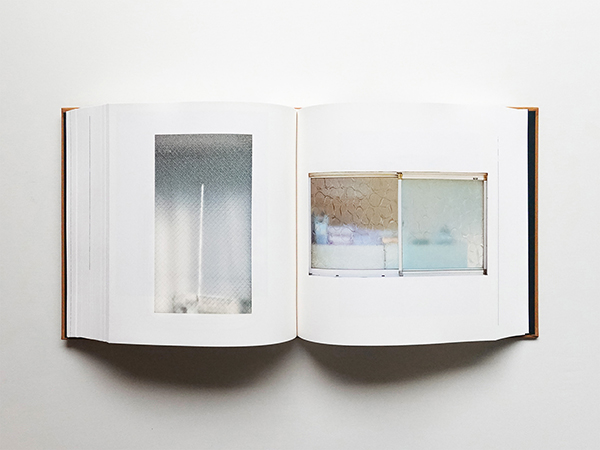
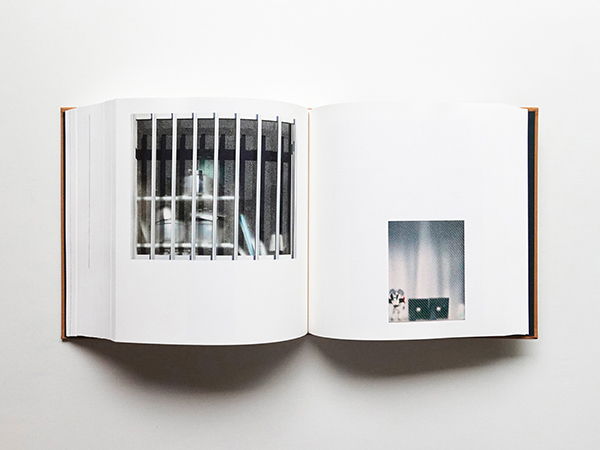
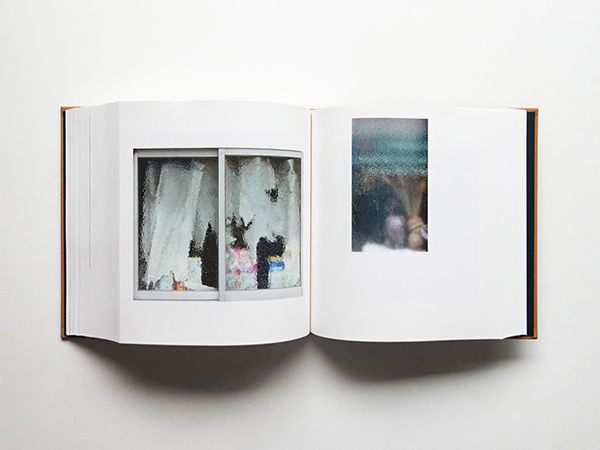
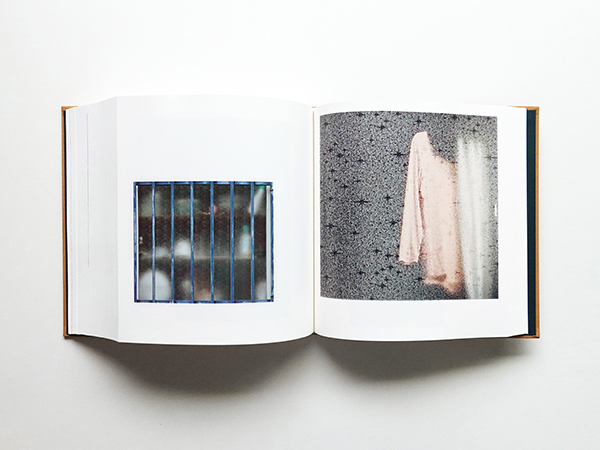
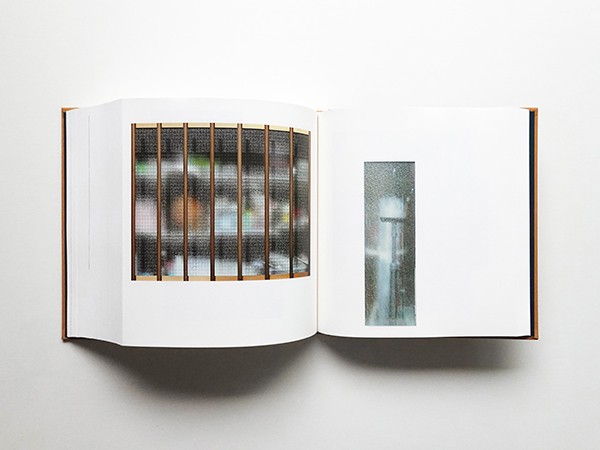
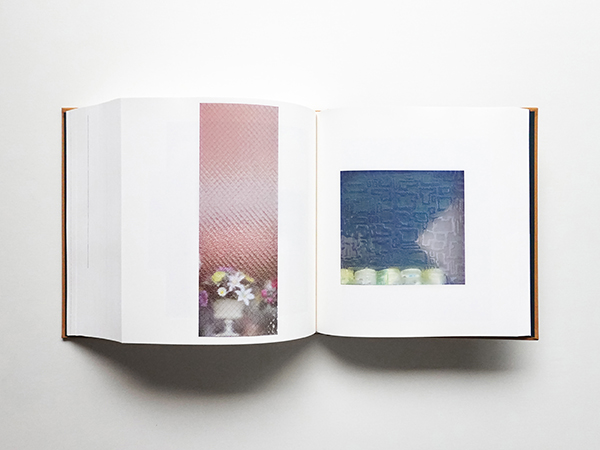
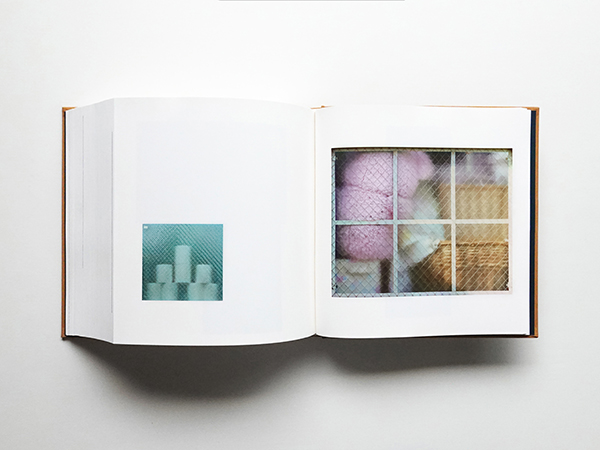
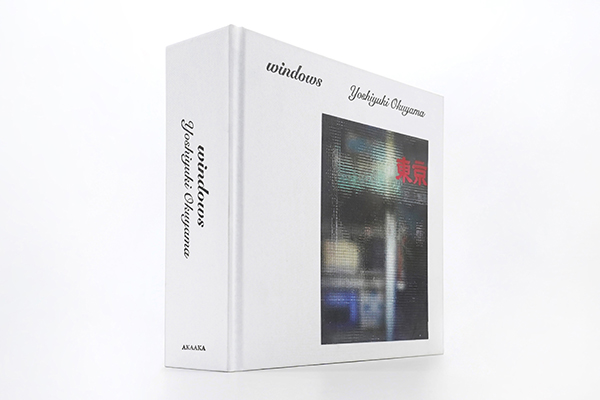
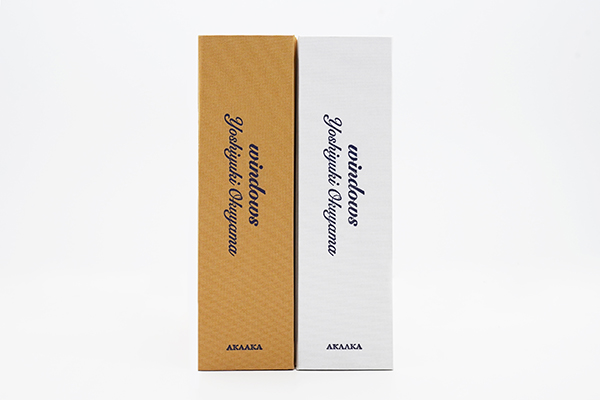
Portraits of Tokyo
Yoshiyuki Okuyama
From as far back as I can remember, whenever I went for a walk I would look at the windows of homes and always enjoy imagining what it was like living there, what kind of people lived there, how did they feel in living their everyday life. Although window glass separates inside from outside, for me it was like a screen that connected me for a fleeting moment with someone whose appearance was not visible.During the time I had a lot of opportunities to visit mainly America and European countries either for work or just travel, I would look at windows as was my custom and I could see a dining room or living room through the clear glass and observe, a little self-consciously, the interior of the room and its furnishings.
In 2020 when the coronavirus pandemic made it impossible to go overseas, I started walking around Tokyo and suddenly realized how few times I was able to see the interior of a home. I hadn’t noticed until then, but many of the windows seen in Tokyo are not transparent but types called frosted or figured glass. It was obvious to me that this reflected a concern for privacy that was greater than in America and European countries. Of course, clear glass is often installed when windows face a garden, or are high up on a building, or placed where people cannot see through them. But if the house is an old one with windows that face the street or the house next door, usually the windows have been made opaque by blasting them with a powdered mineral. Even many of the contemporary buildings I saw had clouded glass that appeared to be covered with a film.
Opaque glass renders abstract all sorts of everyday objects seen through it, the glass itself becomes an interior pattern that is part of the lifestyle of the people who live in the home—to me it seems like a kind of portrait that conveys not only sounds and smells but even what the people are like. From the abstract patterns that line the window frame I detect the vague expression of someone in Tokyo who I have never seen face-to-face. I even felt that opaque glass, which supposedly functions to avoid the gaze of persons nearby, serves the opposite purpose of inflating my imagination and, as a result, revealing the interior for the very reason that it acts as a veil. Particularly during the pandemic, the fact that everyone spent much more time at home so that one’s own idiosyncrasies and those of the other people living in the home became more apparent than ever before may also have an influence.
Be that as it may, why in the world is so much opaque glass seen in Tokyo?
For approximately two years from April 2020 to November 2022, I pondered that question as I was photographing nearly 100,000 opaque glass windows in Tokyo. I also read over some of the literature related to the subject. This prompted me to speculate on the involvement of high housing density, the national character of the Japanese, and architectural styles particular to Japan.
First, metropolitan Tokyo statistically has the world’s most overcrowded residential areas;* also, compared with other major cities, there is less distance between buildings and between buildings and streets, so people are living in a condition of high population density.
Dr. Bin Kimura (1931-2021), who was a medical researcher, psychiatrist, and professor emeritus at Kyoto University, writes in his book Hito to hito tono aida (Between people) “Patience that is impatiently patient is unquestionably what is specific to the interpersonal relations of the Japanese people.” The ambiguous nature of this characteristic that includes the entirely contradictory aspect of “impatient patience” I regard as being associated with an impression of Japanese people as valuing space between oneself and the other that is not too close and not too far. I feel that while we Japanese, aware that we are being viewed by the people around us, don’t cut ourselves off from others, it is nevertheless difficult to characterize us as open-minded. We live drawing obscure boundary lines that are premised on weighing up each other.
It’s only my personal perception, but I wonder if this national character of the Japanese and the proximity of buildings to each other are factors tied to the choice of opaque window glass. By this I mean that for Japanese people living in the overcrowded metropolis of Tokyo whose interpersonal relations are not too close but not too far, glass that lets in light but not images is surely a comfortable fixture.
Next, I’d like to consider the influence of the architectural style distinctive to Japan.
In the period before steel construction became the mainstream in modern architecture, there was a large structural difference between the masonry construction (brick or stone stacked up) of Western architecture and the framework construction (wooden posts and beams assembled together) of Japanese architecture, and this difference is said to have greatly impacted how windows were made.
The English word “window” in the ancient Nordic language meant a “wind hole.” In the masonry construction of Western architecture, first of all walls were built to clearly separate inside from outside and then windows were cut into the walls as holes of the minimum size necessary to let in wind and light. In other words, “opening” a closed space for the purpose of receiving outside information was seemingly part of the origin of the Western-style window.
By contrast, the origin of the Japanese word mado (window) is said to be mato, which signified a “place” between posts. Buildings were constructed with posts and beams and because the spaces between posts were all openings, originally walls did not exist in Japanese architecture. The Heian period saw the creation of separate movable paper screen partitions and board screens that were a sort of partitioning wall fit between two posts to close off and partition that kind of open space. Then in the Kamakura period, paper screens were created to admit light for use in the Shoin style of residential architecture distinctive to the residences of the samurai class. These were double sliding doors made of paper pasted to lattice wood frames that differed from paper screens in use up to that time in that they made it possible to admit outside light. In the Edo period, glass technology introduced to Japan through trade with European countries was utilized to create glass sliding doors that were popular among feudal lords and wealthy merchants. Later, moving into the Taisho period, glass came to be used in ordinary households and gradually transitioned to become the mado seen in our modern age.
By my thinking, essentially the window in Japan with roots as a partition used to “close” an open space had a latent purpose that was diametric to that of the window of Western architecture.
Perhaps the profusion of opaque glass through which only light penetrates and that brings up vague soft silhouettes seen in Tokyo today is because the paper screen partitions that are the original windows of Japan still live in the hearts of the Japanese. It is also no doubt possible that the difference in the windows of Western and Japanese architecture with their respective original purposes of “opening” and “closing” still impacts windows in the present day. It may be that because the archetype of contemporary windows in Japan is the paper screen partition—namely, the mato (the place between) —we Japanese on an unconscious level desire the window to have the “closing” nature of a door.
Toshiyuki Horie (1964- ), an author and scholar of French literature, writes in his book Tomadou mado (Bewildered window), “Wasn’t the window, while being a flat surface, inherently like a picture that manifested an invisible depth?” It is fair to say that the object that is window glass in which transmission and reflection co-exist, is a three-dimensional planar object in terms of exposing things on either side of the surface of the glass. Various objects seen through opaque glass change in appearance depending on the reflection of light at different times of the day and the sense of distance from which they are seen, going back and forth between concrete and abstract, fluctuating, even having a presence similar to a picture that leaves space to imagine the expression of someone never seen before from colors and patterns. In that sense, you could say that the same window seen from the inside is physically completely different when seen from the outside.
As I look again at the opaque “windows” that blend in as a part of the passing days of our lives, I am amazed at the individuality in the huge variety of expressions projected on the screen and I fall gradually into the illusion that maybe it is I as the watcher who is the one being watched. It’s a scary feeling that causes me to stop dead in my tracks.
What is a “window?”
We want to keep out the heat and cold and the wind and rain but let in the sunlight. The window seems to be a paradoxical product that satisfies the conflicting desires of human beings to create a pleasant indoor environment while also enjoying the benefits of the outdoors, and at the same time it serves as an interface that links individuals and society.
In the opaque windows—arguably a sort of symbol of Tokyo with its complex layers of culture and buildings crowded together—I saw the facial expressions of people. I felt that looking at windows is tantamount to strangers looking at one another.
It is my strong and heartfelt desire that these quiet exchanges of eyes meeting eyes can become portraits of people living in the city of Tokyo.
*About housing density in Metropolitan Tokyo
Japan ranks 4th in the world for the largest number of houses with 62.42 million houses (as of August 2021), but only 61st in terms of area, with 380,000 km2. The three countries with a larger number of houses than Japan are the United States, Brazil, and Russia. These are all countries with a huge land area, so also from this fact it is apparent how high housing density is in Japan. Metropolitan Tokyo stands out from all of the other cities in the country for the largest number of houses with 7.67 million houses (as of April 2019), but ranks 45th out of 47 prefectures for land area. Considering that Japan probably has the highest housing density of any country in the world and what’s more housing density is particularly high in Tokyo, it is safe to say that Tokyo has the most overcrowded residential areas in the world.
_______________________
Gentle Friction
Toshiyuki Horie(Author)
Translucent figured glass that’s smooth on one side and patterned on the other was an everyday feature of home life for kids born in the Showa era like me. In our house, the door between the living room and the kitchen had a glass panel with a bamboo grass motif. Lit from behind, the clearer glass of the leaf shapes stood out, while the skinny leaf stems caught the dazzling light. My friends had similar glass doors with maple leaf or clover patterns, or with a sculptural hammered finish that reminded me of thumbmarks pressed into the glass, or little scraggly ridges and divots that made the light scatter. These ones were used indoors, so they were clear enough that you could see a person’s shadow on the other side. That’s why we never put anything too close to the glass. Maybe a shelf of pots and pans by the kitchen sink, but nothing that would make a silhouette. Something wild happened if you stepped outside and looked in through the windows. Those panes of glass transformed into paintings. The scraggly ridges took on pointillistic flair, while the hammered glass assumed the fauvism of a picture painted with a palette knife, and the maple leaves and twirling whirlpools bent the light in a peculiar way.
The images in windows by Yoshiyuki Okuyama are abstract pictures made from a panoply of patterned glasses. This is about more than surfaces. The effect depends on things appearing from the depths, or the interior, loose figures in different shapes and colors. Cast through the translucent panes, these objects possess both a distinctiveness that speaks to the lifestyles and personalities of their owners, as well as an anonymity, like beguiling flotsam you might pick up on the seaside. This synergy disrupts our best attempts to focus.
Colorful washing machines, clothing, shoes, toothbrushes, floor grates, figures, frying pans, seasoning, tupperware, cutting boards, stools, hula hoops, hagoita, kamidana, toilet paper, stacks of books, water hose, plastic kerosene tanks, dress forms, umbrellas, globes, telephone lines, jars, bud vases, artificial flowers, real flowers, houseplants, bicycles, suitcases, flashlights, water tanks, canes, shallow baskets, cups, signage, uchiwa, oscillating fans, dust busters, balls of yarn, reused disposable chopsticks, teru teru bozu, cannisters, detergent, cup ramen, dustbins, woven baskets, caboodles.
All manner of things meant to be hidden from the outside world are on display, for all to see. Windows are essentially a port for letting in the air, but most of the homeowners in this book seem to use them as a see-through wall for letting in the light. The disorder closes in on the photographer. If personality is how we collectively define the choices, arrangements, and decomposition of the things that make a life, a person looking through a window from outside can pass through space and time and spin a tale from all the life subconsciously subsumed into the space, inferring what kind of person lives there, what roads have led them to the present.
And yet, Yoshiyuki Okuyama moderates the individual conversations by sheer volume of examples, sparing us from too much information. The window sashes are not wood, but aluminum, while the composition is not of the brush, but of the laser, rectilinear and precise, using the rectangle as its organizing principle. Ranging from windows equipped with bars for stopping burglary to louvres and glass blocks, the selection opts for shapes that anybody at a glance would read as windows. Rather than view each pane as a detailed portrait, the photographer captures them as an anonymous assemblage, building a constellation. The photographs were taken digitally, to give these tessellations of textured glass a more mineral quality, and edited using a polarizing filter. While I can’t speak to the technological details, I can say that the equilibrium between light and dark is never lost in the hundreds of images gathered herein, no matter how the colors are combined behind the glass, or how the light is swallowed by the shadows. The blend of individuality and anonymity is balanced with a kind of perfect pitch, allowing for a narrativization of the humdrum tales behind each pane. This is a constellation that is constant, one which we would find in the same place even if we changed the order or viewed it from another angle.
Pieces of light, physical and scattered by the patterns. No matter how the details of these private lives are abstracted, things have a way of capturing the spirit of their owners, and a fraction of a moment can contain decades of experience. I dare say the photographer, walking the streets of Tokyo, felt this temporal light being reflected in his soul. Training the eye on unclear window glass sheds light on the unclear parts lurking in our selves. Of all the objects lodged into these slices of life, cut flowers show up over and again. Set by a window, they are a lifesaving device, holding us above the chaos and confusion of existence, whether they are fake or real. It could be that these flowers link back to Okuyama’s flowers, photographed at his grandmother’s house—and emblematic of her absence. The wavy glass in that house’s lattice and the figured glass set in the kitchen window hold more flowers, aligning the viewer’s gaze with the gaze of the departed, gently leading us outward from within. In windows, we find the opposite: flowers seen from the outside lead us on a journey inward, not into the private space behind the windows, but through the scraps of our own memories.
The result is an invaluable opportunity, in which a single absence provides access to innumerable absences. The photographer has no intention, good or bad, to convert the abstract pictures of the glass into satisfying imagery. Not having an intention is what holds our gaze, creating a sense of stability that extends beyond the frame. These pictures are a record of a meeting, when the artist’s memory rubs up against the life he finds inside the glass, creating a small amount of heat. So that we can share that gentle friction.
_______________________
What Windows Seen From Outside Tell Us
Taro Igarashi(Architectural Historian, Architectural Criticism)
Windows tell us a lot of things.
Since 2007, I’ve participated in a windowology research project that has made me aware again that of all the many parts of an architectural structure the window is particularly interesting. Compared to structural elements such as roofs, floors, railings, and walls, the reason windows can be studied from a number of aspects is probably because they are closely related to human behavior. A building is first of all expected to function as shelter for protection from the external world. But it is not a completely closed box. Of course, doors are needed for entrance and exit by the occupants and rooms ordinarily have windows. If there are no holes, it is not an architectural structure. Buildings devoid of windows are limited to special facilities such as warehouses, data centers, nuclear power stations, and nuclear shelters. The Italian architect and designer Gio Ponti said, “There are no windows on the facade of cemeteries. That’s because you don’t meet anyone there. The window is life, it is the internal.” (Kenchiku wo ai shinasai [Love architecture]. Bijutsu Shuppan-Sha). He means that the presence of the window reveals that there is a living human being inside the structure.
The role of the window can be roughly summarized by three points: lighting, ventilation, and view. In pre-modern times the window was primarily used for control of light and heat, but that role was usurped in the modern age by artificial lighting and air conditioning equipment. So the important function left to the window was the view of the outside that it provided. Then devices such as personal computers, projector screens, and big screen TVs also appeared on the scene. Even so, the window didn’t disappear. For example, although a space station is complete without windows, which can be a physical weak point, if the mental health of the persons staying there taken into consideration it is better to have windows. Even when confined to a room it is important to be able to feel the outside world not through a monitor but directly through a window. Incidentally, in residential areas in Japan, even though a home has windows the curtains are often kept closed. The reason is most likely for protection of privacy when the house is very close to a fence and just on the other side there is a road or the house next door. It’s understandable that there are windows on houses in America, where there is ample distance from houses to roads and front yards between houses and roads, but if you aren’t going to be looking outside then it should be fine not having to go to the trouble of adding windows to a home. Even so, houses in Japan have windows.
What I find extremely interesting in Yoshiyuki Okuyama’s photobook windows is his thorough attention to opaque glass. Although it is a window, the glass is not transparent so what is on the other side can’t be seen clearly. Of course, it’s conceivable that this indicates continuity with the sliding paper screens in traditional Japanese houses that allow only dim light into a room. But I am more inclined to think that, as I previously mentioned about curtains, it has to do with the insufficient land area for residential housing in Japan, or rather in Tokyo, that has amplified this phenomenon. Also, many of the windows chosen for inclusion in windows are fixed windows that don’t open or that can be opened by aren’t. So they let in light but are not intended for ventilation or for looking outside. Okuyama photographs these windows from outside, excluding the wall and printing only the window frame, the glass, and whatever was visible through the glass. On the other hand, Okuyama’s photobook flowers (2021), in which he photographs the rooms where his deceased grandmother lived, we see here and there throughout the photobook photographs of light filtering in through the windows from outside and photographs taken inside the room of flowers on the windowsill and curtains at the windows. In both the windows and flowers photobooks people are absent from the photographs that impart a sense of present life or the vestiges of life, but life is viewed from the opposite directions of outside and inside.
What had his grandmother felt, what had she thought? The warm, soft photographs in flowers seem to be an affirmation, an attempt at dialogue with his now absent grandmother. In contrast, windows is a collection of a great number of windows encountered in the city on the other side of which strangers live. Okuyama and these other people are separated by opaque glass that preserves an absolute sense of distance from the subjects. Let’s compare this some other photographic works. Masao Gozu is a photographer who photographs windows in New York with people looking outside the window from inside their room that show their faces and expressions or the composition of family members by which we can clearly imagine what their lives are like. Shizuka Yokomizo’s Dear Stranger series are photographs of people who she sent a letter to asking them to stand by the window at a designated time of day and she photographs their appearance but without speaking to them. Both Gozu and Yokomizo photograph the inhabitants of residences, but Yokomizo, while approaching the subject, uses the presence of the window to function as an ingenious device that maintains the relationship between photographer and subject as two strangers. However, in Okuyama’s windows, room interiors can be seen only vaguely and there are no human forms. It is only possible to make out colors and shapes; objects have the star role.
Below is a list of things that are slightly visible.
Curtains; laundry detergent; flower vases; shirts and uniforms hung to dry; small articles such as stuffed animals and character figures; chairs, shelves, and other kinds of furniture; tableware such as plates and cups; frypans and other cooking equipment; instant noodles, sake, and other foodstuffs; umbrellas; vacuum cleaners; shimenawa (?) (rope woven with rice straw); a stack of toilet paper cores; shoes; bicycles and cars (!); stained glass; streaks left from wiping the window; memos and tape stuck on the inside of the window; and broken glass marks. There is also graffiti and words written on the glass, but basically none of the messages are written to be seen from the outside (only 東京 (Tokyo) was not reversed). There were surprisingly few books, probably because people avoided putting bookshelves by windows to keep books from being faded by sunlight. Other things seen are light from inside a room that filters outside, and plants and trees outside that are seen reflected in the glass. There is also frosted glass patterned with things like leaves or stars, and some windows made of glass blocks. Not many windows had grating for security purposes on the outside, which may be typically Japanese. The artist Ching Wen Chang presented large works depicting housing complexes in Tokyo and Taiwan in an exhibition at the Spiral Independent Creators Festival in Spiral Garden. At a glance, the housing complexes look similar but the decisive difference is the presence or absence of grating on windows to prevent theft.
I’m also interested in the fact that the timing of Okuyama’s photographing of windows coincided with the coronavirus pandemic. The pandemic fundamentally changed daily life, and the premise of architecture that spaces where people gather are unconditionally good was overturned. Everyone saw everyone else as a potential threat. It resulted in a stay-at-home society and the purpose of the window as a connector of inside and outside was called into question. Also, the window has two contrary functions―to open to the outside and to close to the outside. This contradiction overlaps with the fundamental problem facing society of whether to resume economic activities or prioritize safety and institute lockdowns. The other side can be seen through window glass, but it also functions as a physical barrier that shields from airborne particles. An increasing number of people stayed at home facing the computer―the new age “window” that connected them to the distant world. That being said, the conventional window was accepted in its role of connecting people with the surrounding scenery and other people in the neighborhood in real-time. In actuality, in every part of the world communication takes place that is only possible by using windows―opera sung at the windows of balconies for others to hear, messages of gratitude to health care workers sent through windows, windows used as an intermediary for accepting and delivering things when social distance should be maintained.
But during the pandemic in Japan this use of windows was minimal. I think the housing situation may be relevant due to the absence of a yard or garden to provide a buffer zone and the proximity of houses to roads and houses next door. The artist Makiko Yamamoto in her Through The Windows series creates drawings of windows on homes in London, adding text about what she imagines life is like from what can be seen in the room through the window and she talks with the people living there. Okuyama limits himself to only photographs taken from outside. But room interiors photographed through opaque glass capture unexpected beauty. The shapes of objects are softened, creating blurred images that resemble impressionist paintings. Geometric patterns in glass that look like a mosaic seem to transform into abstract paintings reminiscent of the works of Paul Klee or Katsuhiro Yamaguchi’s Vitrine series. The surfaces of glass that diffusely reflects light appear as works of art. Okuyama’s photobook is remarkable in that it is a discovery of the pictorial value of the window seen from outside.
Through researching windowology, I mentioned in my manuscript Picture = Window Theory ―The Picture is a Window (The Window exhibition catalogue. Heibonsha, 2019) that the window and the picture are semantically similar, but that is only assuming that the window is seen from inside the room. By this I mean that the window in the enclosed space of the room shows us the view outside, and a picture contained in a square frame, in the sense that it portrays a different world, plays a role analogous to the window. It is not a coincidence that a landscape was often the subject of frescoes in houses in Pompeii in the ancient Roman era. And in 17th century Holland, curtains were hung in front of pictures in a room and curtains are also seen painted in the corners of pictures. The window and the picture both bring images from outside into a room. But the images inside a room seen from outside through opaque glass also act as pictures. This is the realization that Okuyama’s windows photobook beautifully imparts.